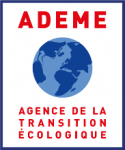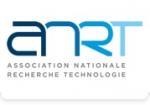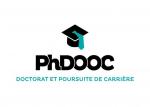Estimation of microsphere distribution for planning of radioembolization in liver cancer
| ABG-133753 | Stage master 2 / Ingénieur | 5 mois | 600 |
| 09/10/2025 |
- Sciences de l’ingénieur
Établissement recruteur
Therenva SAS développe et commercialise une suite logicielle innovante en traitement d’images pour des applications de chirurgie endovasculaire – EndoSize –, fruit d’une collaboration étroite et continue avec des équipes de recherche hospitalo-universitaires de renommée internationale. Diffusé dans le monde entier, ce dispositif médical logiciel multi-plateforme permet aux chirurgiens vasculaires, cardiologues et fabricants de dispositifs implantables, de proposer la procédure cardiovasculaire optimale à des dizaines de milliers de patients chaque année. Ce produit évolue constamment sous l’impulsion des utilisateurs et de notre volonté de développer des outils toujours plus innovants et utiles aux cliniciens.
Therenva développe également une nouvelle gamme de produits – EndoNaut – pour l’assistance aux interventions endovasculaires. Cette station de navigation permettra de sécuriser, fiabiliser et guider le geste interventionnel en salle d'opération par l'apport d'informations pertinentes extraites en phase préopératoire et restituées par des techniques de type Réalité Augmentée.
Description
Liver cancer is one of the most common malignant tumors in the world and is increasing rapidly. Hepatocellular carcinoma (HCC) is the most common type of liver cancer accounting for approximately 75% of all liver cancers. Most cases of HCC are the result of infection with hepatitis B or C, or cirrhosis of the liver caused by alcoholism. Hepatocellular carcinoma is not the same as metastatic liver cancer, which starts in another organ (such as the breast or colon) and spreads to the liver. Unfortunately, treatment options are limited for many patients due to excessive tumor growth and spread, in addition to the presence of cirrhosis. In certain cases, interventional oncology is an alternative to traditional surgery, chemotherapy or radiotherapy, when these conventional therapeutic strategies have failed or are not considered safe. Based on our experience in endovascular interventions of cardiovascular procedures, the objective of this new project is to propose a set of computer-assisted tools for the planning of endovascular liver interventions, with a major focus on chimio- and radio-embolization procedures for HCC.
Objective:
The first mandatory step of this innovative project will be to analyze the pre-operative patient images and validate automatic segmentation algorithms of anatomical structures, in particular segmentation of the liver lesions and the hepatic arterial tree. This will allow creating a full 3D model of relevant anatomical structures for improved intervention planning. Then, the work will focus on 2 aspects:
- Technical aspect: experimentation with new opensource numerical simulation solutions for applications in cardiovascular surgery
- Scientific/Research aspect: computational fluid simulation of radioactive microsphere distribution for liver radioembolization (using the best technical solution identified)
A collaboration with interventional radiologists will be needed. This work will be a further step towards better planning and assistance of endovascular procedures in oncology, providing the interventional radiologist with new tools for secured endovascular interventions and therefore a real alternative to traditional treatment options such as chemotherapy or radiotherapy.
Profil
- 4ème ou 5ème année d’école d’ingénieur, Master 1 ou Master 2
- Appétence pour la recherche scientifique / notions de simulation numérique
- Maitrise de l’anglais technique
- Intérêt pour les applications médicales
Prise de fonction
Vous avez déjà un compte ?
Nouvel utilisateur ?
Vous souhaitez recevoir nos infolettres ?
Découvrez nos adhérents
 SUEZ
SUEZ  ADEME
ADEME  Généthon
Généthon  ANRT
ANRT  MabDesign
MabDesign  Groupe AFNOR - Association française de normalisation
Groupe AFNOR - Association française de normalisation  Ifremer
Ifremer  TotalEnergies
TotalEnergies  ONERA - The French Aerospace Lab
ONERA - The French Aerospace Lab  Institut Sup'biotech de Paris
Institut Sup'biotech de Paris  Tecknowmetrix
Tecknowmetrix  Laboratoire National de Métrologie et d'Essais - LNE
Laboratoire National de Métrologie et d'Essais - LNE  MabDesign
MabDesign  CESI
CESI  CASDEN
CASDEN  PhDOOC
PhDOOC  Aérocentre, Pôle d'excellence régional
Aérocentre, Pôle d'excellence régional  Nokia Bell Labs France
Nokia Bell Labs France  ASNR - Autorité de sûreté nucléaire et de radioprotection - Siège
ASNR - Autorité de sûreté nucléaire et de radioprotection - Siège
